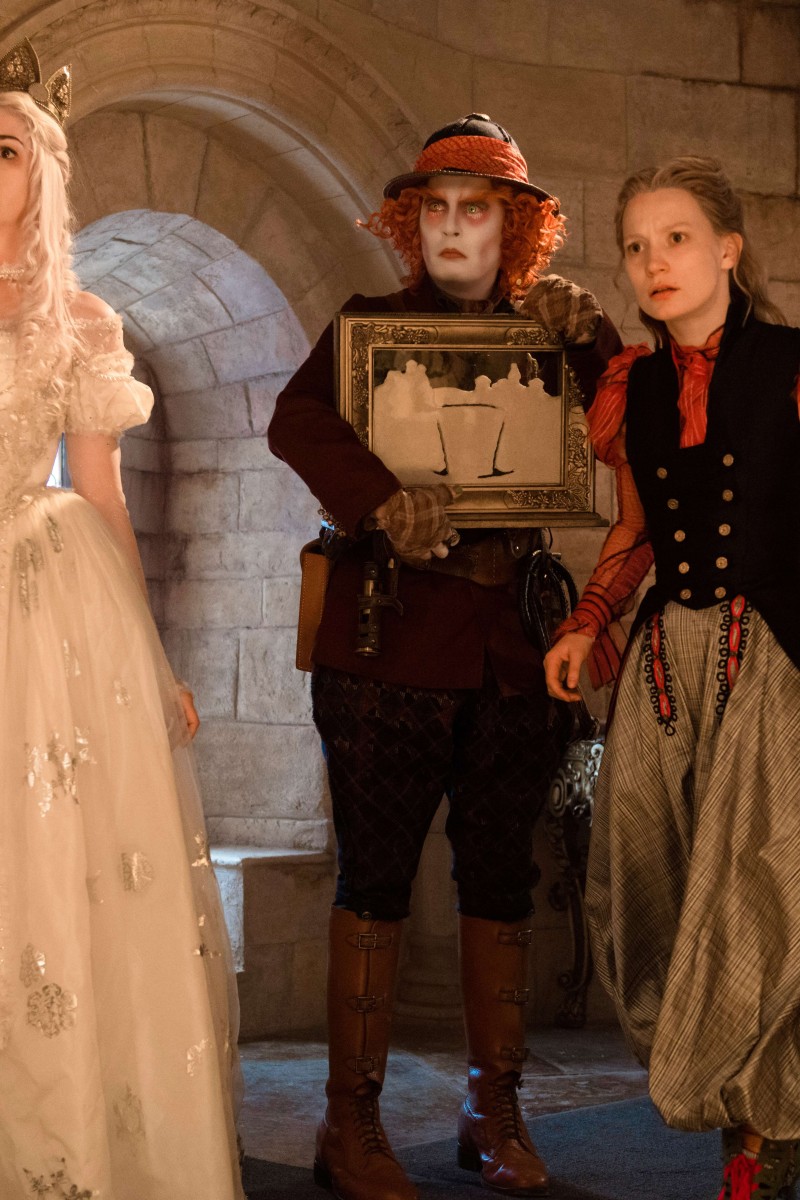
Have the new Alice in Wonderland movies strayed too far from the original?
Alice in Wonderland is a classic tale, but how true to the original stories are the most recent movie adaptions? Our cadet found seven major differences
 Producers used some artistic licence for Alice Through the Looking Glass but it’s still a fun movie.
Producers used some artistic licence for Alice Through the Looking Glass but it’s still a fun movie. Never have movie adaptations strayed as far from their classic literary equivalents as Alice Through the Looking Glass has ... or has it?
Alice Through the Looking Glass, the sequel to Alice in Wonderland (2010), hit cinemas last month. Don’t assume the movies are faithful adaptations of the books though. Here are seven key differences.
The setting
In the movies: Alice visits “Underland”.
In the books: In Alice’s Adventures in Wonderland, Alice travels to Wonderland. In the sequel Through the Looking-Glass, Alice first finds herself in the Looking-Glass House, and later travels across a chessboard. The two universes are independent, although the Hatter and the Hare reappear as Hatta and Haigha.
Change: The movies fuse the characters in Wonderland and the Looking Glass together to create the new universe, “Underland”.
Alice’s age
In the movies: Alice is 19 in the first movie, and 22 in the second.
In the books: Literary analyses suggest that Alice is around seven in the first book, and in the second book she discloses that she is precisely seven and a half.
Change: The first movie acknowledges that Alice has already been to “Underland” in her childhood, while the second movie makes no mention of it. Underland does not exist in the books.
Alice’s missions and lessons
In the movies: In the first movie, Alice is destined to slay Jabberwocky, the Red Queen’s pet monster, and end the queen’s tyranny. She regains her childhood courage and imagination in the process. In the sequel, she resolves to save the Mad Hatter from his madness by helping him to find his family.
In the books: The first book records Alice’s encounters with many unreasonable characters in Wonderland and her confusion with frequent changes in size. Literary analyses suggest that Alice’s Adventures in Wonderland is a metaphor for growing up, when children experience anxiety about their physical changes, and find adults silly and bossy.
The second book is a giant chess game, again with twisted logic and perplexing characters. This time Alice has a clearer goal to become Queen by starting as a White Pawn and advancing to the other end of the chess board. This follows the rule of promotion in chess where a pawn that makes it to the eighth square can become a queen. Continuing with the theme of growth and hinting at Alice’s sexual awakening as she is crowned, the second book also explores the loneliness during the process of growing up, and the idea of fate.
Change: Lewis Carroll intentionally created a sense of nonsense in his books to mock the silliness of adult world, while the movies rationalise Alice’s adventures by setting her up as a heroine.
4 Time
In the movies: In Alice Through the Looking Glass, Sacha Baron Cohen portrays Time as a physical person – the man chasing Alice after she stole his chronosphere.
In the books: In Alice’s Adventures in Wonderland, the Hatter mentions that Time is a “him”, but he is only discussed in conversations and never appears in person.
5 “Mad Hatter is my truest friend”?
In the movies: Alice and the Mad Hatter share a close relationship. In the sequel, Alice declares him her “truest friend” when she promises to help him.
In the books: Alice only has several brief encounters with the Hatter in the first book and Hatta in the sequel. During the longest one, Alice leaves the Hatter’s tea party in disgust and rage after he scolds her. Throughout the two book, Alice’s closest relationship with the fantastical characters is with the White Knight towards the end of the second book. He rescues her from the Red Knight and escorts her to the seventh brook which she must cross to reach the eighth square.
6 The Red Queen and The White Queen
In the movies: The Red Queen and the White Queen are sisters and nemeses.
In the books: The Red Queen and the White Queen only appear in the second book. They are not sisters but only chess pieces, so they don’t fight over the throne as in the movies.
Change: The Red Queen depicted in the movies is modelled after the Queen of Hearts in the first book. The Queen of Hearts often orders executions with her famous shouts of “Off with his/her head!”. The movies offer richer back stories about her physical abnormalities and craving for respect to explain her personality.
7 Size changes
In the movies: Size changes are plot devices.
In the books: Size changes, exclusive to the first book, also serve as a motif to develop the themes of children’s confusion during growth and the struggle to find their identity. Alice is often frustrated with her size. Experiencing great changes in her body and mind and feeling as if she has become another person, she starts to question her identity.
If you are intrigued by the books or the movies to explore the other, treat them as separate stories for maximum enjoyment. If you spend too long thinking about them you’ll spoil the fun!